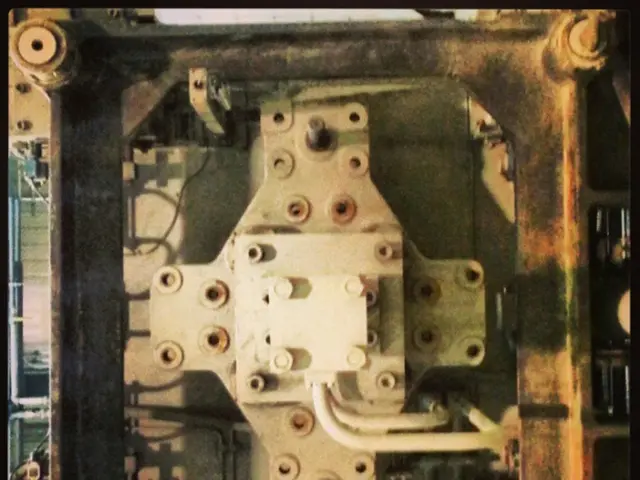Chinese Cosmonauts Safely Return to Earth, Remain in Sound Condition
Title: China's Shenzhou-19 Mission Successfully Returns After 6-Month Long Space Odyssey
In the heart of China, Jiuquan roared to life once again on April 30, 2025, as the Shenzhou-19 crewed mission splashed down, marking a triumphant end to a six-month-long space odyssey. The China Manned Space Agency (CMSA) proudly announced the mission as a resounding success.
At 12:17 p.m. (Beijing Time), the Beijing Aerospace Control Center issued a return command, initiating the spacecraft's final journey. The orbital capsule of the Shenzhou-19 spaceship separated from the return capsule, and a controlled descent began. The return capsule ignited its brake engine, separating from the propulsion capsule, and touched down at 1:08 p.m. at the Dongfeng landing site in north China's Inner Mongolia Autonomous Region.
By 2:02 p.m., the brave astronauts, Cai Xuzhe, Song Lingdong, and Wang Haoze, emerged from the return capsule, their bodies in good health after an incredible 183 days in orbit.
The three astronauts were launched to the Tiangong space station back in October 2024, making way for the new crew that recently arrived to take their place. The Shenzhou 20, which brought this new crew, also carried equipment for space life sciences, microgravity physics, and new technology for the space station.
The Tiangong, or "Heavenly Palace," space station has solidified China's position as a leading force in the new era of space exploration, particularly since it was entirely Chinese-built after the country was excluded from the International Space Station over U.S. national security concerns. China's space program is managed by the People's Liberation Army, the military branch of the ruling Communist Party.
Interestingly, the Shenzhou-19 crew lived in harmony with the new astronauts from Shenzhou-20 for around five days during the handover process. This unique situation allowed them to collaborate on essential tasks such as equipment upgrades, debris shielding installations, and regenerative biology experiments, even involving the use of planarian flatworms.
The Tiangong space station currently orbits at around 400 km altitude, boasting a T-shaped structure and a 110 m³ habitable volume. Plans are underway for its expansion to a cross-shaped configuration and continued international collaboration. This mission serves as a testament to China's evolving crew rotation capabilities and its relentless pursuit of scientific breakthroughs in low Earth orbit.
- The successful return of the Shenzhou-19 crew marked the end of a 183-day journey in space, with the astronauts, Cai Xuzhe, Song Lingdong, and Wang Haoze, emerging in good health.
- The Shenzhou-19 mission, a part of China's health-and-wellness and space-and-astronomy endeavors, included microgravity physics and space life sciences research.
- During the Shenzhou-19 mission, the three astronauts collaborated with the new crew of Shenzhou-20 on experiments such as regenerative biology studies involving planarian flatworms.
- As China continues to expand the Tiangong space station and establish international collaborations, it moves towards a future focused on health, scientific discoveries, and advancements in space technology, particularly in low Earth orbit.










